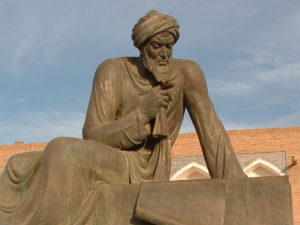
Gregor Mendel (1822 – 1884) was a German-speaking, Augustinian monk who did pioneering work on genetics. His claim to fame however, was posthumous. Mendel’s initial work was more or less unknown while he was alive and went unnoticed until it was rediscovered 50 years after death.
Mendel was born in the Austrian Empire in what is now present day Czech Republic. During his childhood he worked on the family farm until he was sent to school at age 11. However money was tight for him and his family and financial struggles weighted on his decision to join the monastery. He joined the Augustinian Saint Thomas’ Abbey in Brünn and began his theological studies. Mendel was always interested in more than just is theological studies and under a sponsorship he sent to study for two years at the University of Vienna to receive a broader education in the sciences.
When Mendel returned from the University of Vienna he began to carry out experiments on plants in the monastery’s experimental gardens. He chose the common pea and began his experiments in 1856. He identified seven traits that seemed to be inherited independently of other traits. Mendel tested over 28,000 pants in the eight years of experimentation and was able to generalize a few laws of inheritance from his results.
His first law, the Law of Segregation, states that allele pairs (one form of a gene) segregate during gamete (sex cells: sperm or egg) formation. Stated differently: each organism inherits at least two alleles for each trait but only one of these alleles are randomly inherited when the gametes are produced. His second law, the Law of Independent Assortment, states the allele pairs separate independently during the formation of gametes. His third law, the Law of Dominance, states that when two alleles of a pair are different, one will be dominate while the other will be recessive.
Mendel did various other experiments in biology and in other areas of science but the burdens of his administrative duties became too great and he stopped going his scientific studies. He presented his work a handful of other people but nobody at the time realized the significance of his work. The conventional wisdom was that there was a general blending of heritable traits rather than Mendel’s particulate inheritance of traits, where traits are passed in discrete packets. Mendel’s work was rediscovered by three botanists each working independently in 1900 – Hugo DeVries, Carl Correns and Erich von Tschermak. They gave priority to his work as well as confirmation to their own research.












